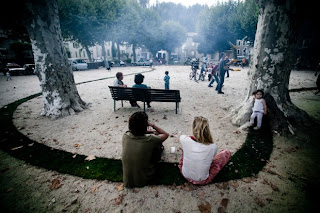Bloom
Consulting Company released a new annual Country Branding Ranking. According to
this ranking the USA continues its reign as the world leader in the 2012
Country Brand Ranking both for Trade and for Tourism, the strong overall performance
and excellent CBS Rating ensured its’ continued dominance. For the first time,
the United Arab Emirates, joined some of the Asian Tiger economies in the top
25 both in the Tourism and Trade Rankings.
Asia performed extremely well in the 2012 Ranking. Eight Asian countries finished in the top 25, with China as number four. Aided by both strong tourism receipts and CBS Ratings, Thailand (6) and Malaysia (14) significantly improved from last year. For the first time, Macao was evaluated as an individual country and finished with a bang at number eight. A notable absence was Japan.
Russia takes the 20th place in this ranking between Croatia and Portugal. The progress is called here “Slightly Strong”.
CBS Rating is calculated using brand strategy economic performance analysis and analysis of Online Search Demand. The country brand strategy is measured through brand tags, the key words that reflect the brand strategy of each country. For the first time in any country or nation brand ranking, Bloom’s Online Search Demand (OSD) is able to show if a country supplies what tourists are seeking, and how well the country is matching this demand.
Brand tags function as the ‘supply’ side of the tourist-destination equation. Thousands of brand tags were collected from each country’s official tourism agency and then classified into 38 different clusters that relate to adventure sports and activities, natural features, local culture and traditions, or gastronomy. Each cluster is assigned an economic value in order to rate the relative returns gained from each brand tag.
Asia performed extremely well in the 2012 Ranking. Eight Asian countries finished in the top 25, with China as number four. Aided by both strong tourism receipts and CBS Ratings, Thailand (6) and Malaysia (14) significantly improved from last year. For the first time, Macao was evaluated as an individual country and finished with a bang at number eight. A notable absence was Japan.
Russia takes the 20th place in this ranking between Croatia and Portugal. The progress is called here “Slightly Strong”.
CBS Rating is calculated using brand strategy economic performance analysis and analysis of Online Search Demand. The country brand strategy is measured through brand tags, the key words that reflect the brand strategy of each country. For the first time in any country or nation brand ranking, Bloom’s Online Search Demand (OSD) is able to show if a country supplies what tourists are seeking, and how well the country is matching this demand.
Brand tags function as the ‘supply’ side of the tourist-destination equation. Thousands of brand tags were collected from each country’s official tourism agency and then classified into 38 different clusters that relate to adventure sports and activities, natural features, local culture and traditions, or gastronomy. Each cluster is assigned an economic value in order to rate the relative returns gained from each brand tag.
Domestic
and international tourist searches for the brand tags and related words were
then analyzed, country by country, in the most used search engines, to show the
country’s accuracy match and quantify Online Search Demand. By considering the
OSD, Bloom Consulting is able to show if a country offers what tourists are
seeking, and how well the country is matching this demand. This identifies the
gap between supply and demand. The more accurate a country is, the better the
CBS Rating.
The
Ranking
for Tourism you can see here - http://www.bloom-consulting.com/sites/default/files/files/Bloom_Consulting_Country_Brand_Ranking_Tourism_2012.pdf 






.png)
.jpg)
.jpg)
.jpg)
.jpg)
.jpg)





